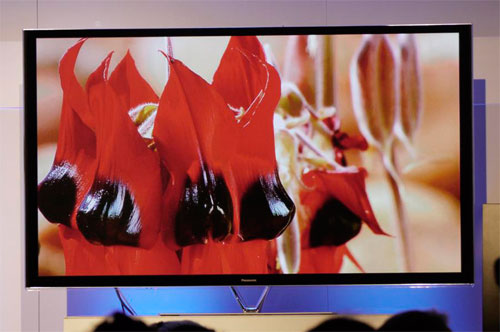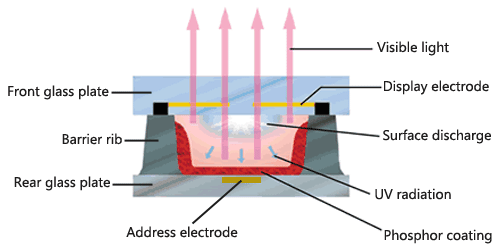“Will they? Won’t they?” Years of speculation about whether Panasonic will pull the plug on its loss-making plasma TV division came to an end last month, when the Japanese manufacturer officially announced that it’s going to stop making plasma display panel (PDP) by the end of this year, with sales of both consumer and commercial plasma TVs scheduled to end on the 31st of March 2014. As industry experts reflect on the demise of yet another class-leading lineup of television sets (just like the critically acclaimed Pioneer Kuro before it), it has transpired that 4K Ultra HD, or lack thereof, was the main factor behind Panasonic’s plasma exit.

A Panasonic USA senior employee, who posts exclusively on the HighDefJunkies forum under the username “avjunkie”, has revealed that the significant amount of resources required to develop a consumer-grade 4K plasma TV was the final nail in the coffin for the company’s PDP business:
The main reason we have to move on is technology hit a roadblock. We simply cannot make a 4k plasma in a reasonable manner for retail without significant investment…
To understand why it’s so difficult – if not impossible – to build a realistically-sized plasma TV (say, 55 or 65 inches) for the average home, let us first look at the inner workings of a plasma screen. Each PDP is made up of millions of plasma cells held between a front and a rear glass plate. The cells contain a mixture of 10% xenon and another chemically stable gas such as neon, which is maintained at around half atmospheric pressure.
 |
| Plasma cell structure (image credit © Pioneer Corporation) |
The rear glass plate is lined by address electrodes which are responsible for pixel/subpixel selection, whereas perpendicular rows of transparent display electrodes sit on top of the front glass plate. To generate colour, electrical current is passed through the gas mixture from the address electrodes to the display electrodes, ionising the gas into plasma. This emits ultraviolet (UV) light which is just beyond the visible spectrum for the human eye, but by design, each cell is coated with a coloured phosphor – typically red, green or blue – which will glow once hit by the UV light, resulting in what we perceive as colour.
As we discuss the technical difficulties in the production of 4K plasma televisions, another key concept to grasp is that of pixel pitch, which refers to the distance between the centre of one pixel to the centre of an adjacent pixel. If there is no space between each pixel, then the pixel pitch would be equal to the pixel size. However, this is not the case for plasma displays, where each colour-emitting region has to be separated from the next by a barrier rib.
![]()
Now let’s have some hard numbers. A current 65-inch, full HD Panasonic plasma with a native screen resolution of 1920×1080, for example the 65″ VT65/VT60, has a pixel pitch of 0.747mm. The smallest pixel pitch ever recorded on a commercially available plasma TV is 0.48mm, found on every single 42-inch full HD 1080p Panasonic plasma like the TX-P42ST60. In order to squeeze twice the number of pixels both horizontally and vertically into a 65in screen with 3840×2160 resolution, plasma television makers have to somehow find a way to halve pixel pitch down to about 0.32mm, which is 33% smaller than the smallest pixel pitch on record for a publicly purchasable PDP. Tall order.
A smaller plasma cell would increase the proportion of ionised atoms lost at the wall surfaces, hence reducing the luminous efficacy of the UV light exciting the phosphors. To maintain a similar level of brightness, more voltage would be required to energise the gas mixture, leading to higher power consumption. Also, the intracell gas pressure has to be doubled to approximately atmospheric pressure not only to suppress atomic losses, but also to maintain discharge stability.
 |
| 58in UHD plasma prototype (image credit © NHK STRL) |
Despite these seemingly insurmountable technical challenges, Panasonic and Japanese national broadcaster NHK have actually succeeded in developing a 58-inch plasma prototype with 3840×2160 resolution and a pixel pitch of merely 0.33mm. It didn’t go into mass production (and never will, now that Panasonic has called time on its plasma venture), but there exists another major barrier which would have prevented the 4K plasma panel from going on sale, at least in the UK and Europe.
Since 2010, the European Union (EU) has been introducing stricter and stricter energy efficiency standards for TV sets, with the aim of phasing out the manufacturing, import and sales of power-hungry models. As of the 1st of April 2012, the EU’s ecodesign requirements for televisions states that:
the on-mode power consumption of a television with visible screen area A expressed in dm2 shall not exceed 16 Watts + A * 3.4579 Watts/dm2
A 65in widescreen TV has a screen area of 116.47 dm2, according to this excellent TV screen size comparator and an online conversion tool. Plugging the number into the EU’s equation gives us a maximum power consumption of 419 watts.
Earlier this year, we measured 304 watts from a calibrated Panasonic TX-P65VT65B 1080p plasma. Considering that a 4K plasma features four times the number of pixels that need to be driven, not to mention a smaller pixel pitch which will demand more energy to deliver the same brightness, we’d say there’s virtually no chance of a 4K Ultra HD plasma TV keeping under the EU’s power consumption limit, unless manufacturers dim down the default, out-of-the-box picture mode so much that it’s unusable for normal viewing.
Similar energy legislations are enforced elsewhere too, making 4K plasmas all but a pipe dream. For example, in the state of California effective 1st of January 2013, the maximum power consumption allowed for TVs below the size of 58 inches is 0.12 * screen area (in2) + 25 watts. For a 55-inch TV, that’s 180 watts. The most recent 55in full HD plasma we’ve reviewed, the Panasonic TX-P55VT65B, has already gone past this limit with a measured power usage of 260 watts in its calibrated mode – a UHD plasma television won’t stand a chance.
Had 4K not rolled into town hailed as the next big thing for the TV industry, Panasonic might have chugged along with its plasma display business for another year or two. But faced with numerous technological and legislative obstacles to bring a 4K plasma to market, the Japanese company finally decided to throw in the towel as far as PDP is concerned. And we don’t blame them, not when OLED panels – which consume significantly less power than plasmas, and can be inkjet-printed – present an infinitely more attractive proposition for the mass production of 4K Ultra HD TVs. It’s time to say goodbye to Panasonic plasmas, and we cannot accuse them of not going out on a high.